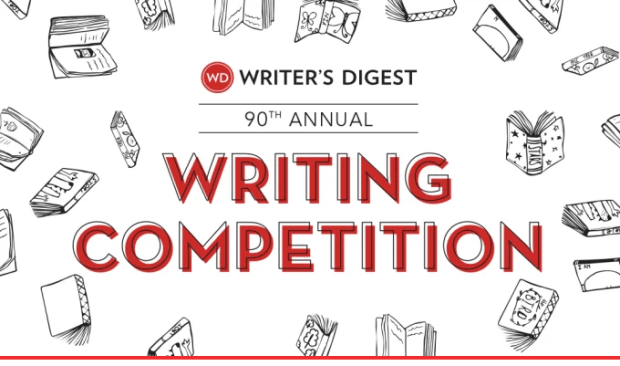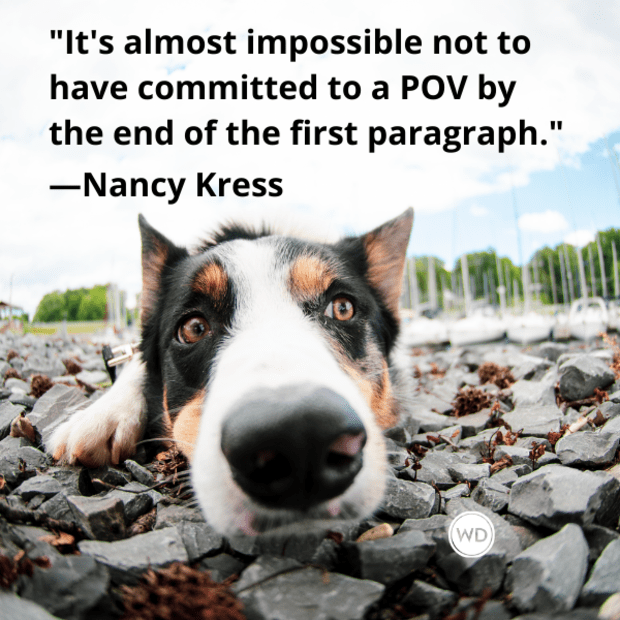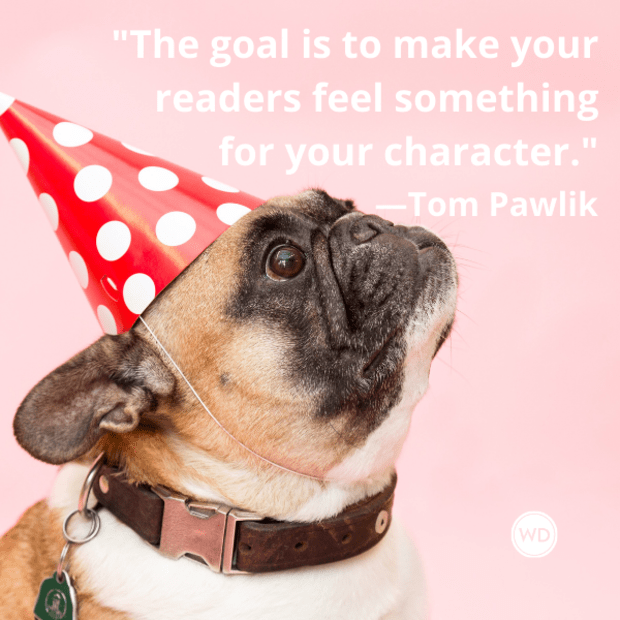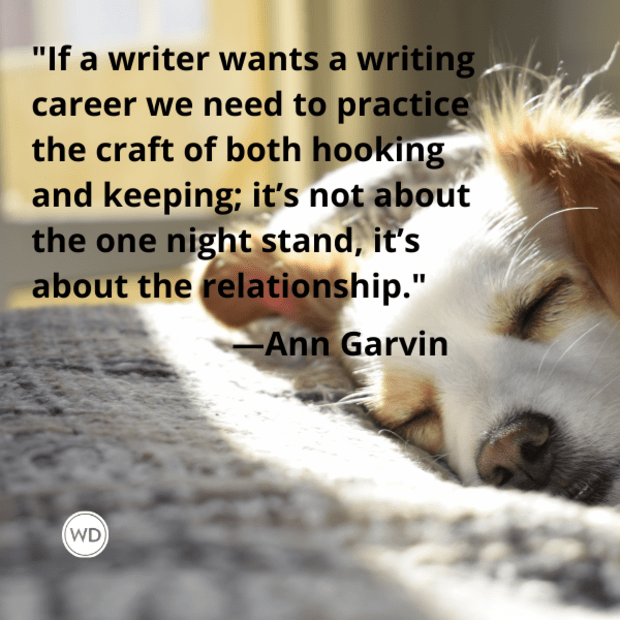You’ve written and revised your children’s and YA stories more than you can count. Only your trusted circle has witnessed the magical way you weave words together to create fictional and nonfictional worlds for tiny humans — yet, everyone tells you more people need to read your children’s and YA stories.
For most writers (or any artist), putting your work out there isn’t an easy step to take, no matter how celebrated you are.
But while it’s daunting to submit a story to a publication — hearing people’s opinions of your work, eek! — it’s also necessary for great practice for all aspiring authors who eventually want to figure out how to get a literary agent.
Whether you write short stories, personal essays, poems or stories for kids, there are tons of magazines that will help bring your story to life for the eager and excited eyes who can’t wait to dig into them.
Now, I warn you: These magazines pay for your stories, but the rates won’t keep the lights on in your house. But it’s a great way to begin earning money for your work, which one day will pay the bills.
Where to submit your children’s stories
Before you submit a story, always familiarize yourself with the magazine to understand the tone and style of the writing it features.
You probably know this already but it bears repeating: Plotting, story construction, character development and more are just as important in children’s and YA stories as they are in adult fiction or other genres — the standards of success aren’t any different.
After you craft a children’s short story that’s ready to be judged, here are 15 children’s magazines that want to read your compelling submission.
“We look for stories that will surprise, move and amuse both young and older imaginative minds,” writes Zizzle Literary magazine’s submission guidelines. An anthology book series that brings parents and kids together to foster a love of reading, Zizzle publishes literary fiction that fascinates kids from age 12 and up.
Your fiction story should have a strong voice and dive deep into themes of meaning and morality that evolve naturally. While Zizzle editors embrace “fresh perspectives on the nuanced joys and tensions in kids’ daily lives and imaginations,” they welcome untraditional storytelling plus tastefully humorous stories.
Flash fiction children’s stories should be 500 to 1,200 words and 2,000 to 4,500 words for short stories. Before you submit, note Zizzle requires a $3 submission fee.
Payment: $100 for flash stories; $250 for short stories.
Founded in 1999, Bumples (for ages 6 to 10) and Bumple Buds (for ages 3 to 5) each publish four issues per year. If you want to submit a story to this interactive online magazine, focus on mystery and adventure stories, as well as fantasy, holiday, sports and animal stories.
For the 3 to 5 age group, submit a story of no more than 800 words; for the 6 to 10 age group, stick to 2,000 words or less. As you write, keep this in mind: Bumples specializes in illustrated fiction, so the editors select stories and poems where they can animate the characters.
Read through the writer’s guidelines to learn more — when your story is ready to submit, email it to editor@bumples.com. Editors prefer Word format but they also accept PDFs.
Payment: $30 for stories; $20 for poems.
If you’re a young writer — or if you know one — award-winning literary quarterly One Teen Story is the perfect place to submit an original story.
Publishing four issues per year that each only contain one story, this magazine features the work of today’s best teen writers from ages 13 to 19. Submissions can fall into any genre of YA fiction (literary, fantasy, sci-fi, romance, horror and more), but they need to be well-written and between 2,000 and 4,500 words. Also, stories should be about the teen experience as well as have teens as the main characters.
Examples include stories that deal with coming-of-age issues, plus those of identity, friendship and family. Make sure you avoid excessive profanity, sex and drug use. To really get the vote of editors, write a story that is strong enough to stand alone, rather than an excerpt from a work-in-progress, for instance.
One Teen Story Teen submissions are now closed but are due to reopen in fall 2021.
Payment: $500 upon publication plus 25 copies of the magazine featuring your work.
Cricket Media publishes 11 award-winning magazines for children from 6 months to teens, so they have submission options for all kinds of writers of any experience level.
Across all its magazines, Cricket Media aims to publish the “finest quality writing and illustration for children of all ages.” Its readers are curious about the world around them and enjoy the artistic expression of these magazine’s crafty stories.
Its four literary magazines for children up to 9 (Babybug®, Ladybug®, Spider® and Cricket®) welcome stories in the genres of illustrated poetry, fiction and literary nonfiction.
Writers with expertise in science, technology, culture and social studies have five nonfiction magazines (for ages 3-14) to submit to: Click®, Ask®, Muse®, Cobblestone™ and FACES™ World Cultures and Geography.
Since these stories require more subject-matter knowledge, writers must also submit a resume and several writing samples. To learn more specifics about story length, desired (and undesired) story elements and more for each magazine, start with the general submission guidelines.
Also an illustrator? View the submission guidelines for artists to find out how to submit there, too.
Payment: For the literary magazines, $.25 per word for stories or articles; $3 per line for poems, or $25 max; $75 flat fee for activities and recipes. Rates for nonfiction magazines are negotiated.
Want to write broadly about health and fitness for kids up to 12 across the U.S.? Publisher of award-winning magazines Humpty Dumpty (ages 2-6) and Jack and Jill (ages 6-12), U.S. Kids Magazines seeks high-quality stories, articles and activities that demonstrate a healthy lifestyle.
Be humorous, playful and witty in a well-constructed story that starts at a basic reading comprehension level to support young readers — but also doesn’t neglect to sprinkle in advanced information. Editors also want a story that can “appeal to today’s children.” That means if you haven’t been around kids in a while, they suggest you doubly ensure your dialogue and characters are up-to-date and authentic.
Jack and Jill accepts full fiction manuscripts of up to 800 words and nonfiction up to 700 words. Humpty Dumpty, on the other hand, wants fiction shorts of 450 words or less, crafts of up to 250 words, poetry up to 12 lines, plus short mini-stories of 70-125 words.
Find details about mailing in your transcript in the submission guidelines, plus what kind of stories editors are especially interested in across accepted genres.
Payment: $25 and up for Jack and Jill magazine fiction and nonfiction stories; $25 and up for Humpty Dumpty poems, $30 and up for fiction stories, and $40 and up for crafts.
Graduate students of Vermont College of Fine Arts’ Writing and Publishing program created this magazine, which strives to amplify traditionally silenced voices and increase representation in literature.
Besides writing that explores, questions and challenges, editors also favor stories that demonstrate what it’s trying to do for others and the world. “We are here to champion writing that upsets systems of power and dominance,” explains the submission guidelines. “Our magazine isn’t going to destroy the cis-heteronormative, white-supremacist, ableist patriarchy, but we are going to try.”
Above all, Hunger Mountain seeks work that is self-aware and avoids the risk of harm. But don’t be afraid to be humorous, or even to surprise editors with romance (that isn’t cheesy), limericks or poems in the styles of ghazal and golden shovel.
Your YA or children’s story submission should be no longer than 8,000 words.
Submissions are currently closed, but they reopen from May 1, 2021, to October 15, 2022. (If you can’t wait, check out its Katherine Paterson Prize for YA and children’s literature!)
Payment: $50 for prose and $25 for poetry.
On the 21st of each month, Silver Pen Publishing publishes a new series with children’s and YA stories from these genres: fiction, modern, urban or classical fantasy, sci-fi, slipstream, literary, action-adventure and suspense.
If you’re a lengthy writer, you’ll love this word-limit: 20,000! For the short story category, submit a story of 1,000 to 8,000 words; no more than 999 for flash fiction. To make the cut, write a well-written story, and focus on technique, voice, characterization and language — that will all play a part in the editors’ decision to accept and publish your story.
“Amaze us with your writing, use of language, sense of story, and memorable characters,” writes the guidelines. The kind of story they won’t be amazed by, however, is fan fiction, or one that possesses cliche elements.
Submit your story via Submittable.
Payment: $15 per story.
Write a story that targets readers who are 10-18, whether it’s poetry (three to 100 lines), a short story or creative non-fiction (up to 12,000 words), or flash fiction (no more than 1,500 words).
Editors seek “excellent, polished writing” that creates an engaging story — one with no profanity, vulgarity, sex or violence. Plus, keep this in mind: “Submissions with the best chance of acceptance will be meaningful on some level to both older and younger readers without being condescending.”
What’s neat about this magazine is it offers feedback on your story once you’ve submitted it, even if it hasn’t been selected for publishing. (Although, it’s optional.)
Payment: $.02 per word, or $20 per work, whichever is more.
Most of all, this print magazine created by speculative fiction-focused Hiraeth Publishing wants your story to have one element: adventure.
Published three times per year in February, June and October, Spaceports & Spidersilk wants fantasy, sci-fi and shadow stories (“spooky, but not terrifying”) aimed at readers ages 8-14. It prefers stories with young protagonists, plus those that don’t harp on an overarching lesson. Instead, editors want a good story that “entertains and connects with emotions.”
Submit genre stories between 1,000 and 3,000 words, flash fiction that’s less than 1,000 words, essays up to 800 words and poetry with no more than 25 lines. Whatever you submit, be sure to follow the magazine’s cardinal rules: No swearing, sex, drugs or sexist language.
Check out the writer guidelines to learn how to submit.
Payment: $6 for each accepted story; $3 for flash fiction.
Interested in writing YA sci-fi or fantasy? Cast of Wonders is the leading voice in young adult speculative short fiction, and it wants stories that “evoke a sense of wonder, have deep emotional resonance and have something unreal about them.”
Stories should be no more than 6,000 words in length and aimed at teens from 12-17. Since the Cast of Wonders podcast sometimes presents stories in audio format, your submission needs to pack a punch: strong pacing, well-defined characters, compelling dialogue and more.
Editors want fiction that makes them think; however, they’ll reject stories with graphic depictions of sexual assault, cannibalism or non-consensual sex and/or drug use.
Submit your thrilling story to the address found in the writer guidelines.
Payment: $.08 per word for original fiction of any length and a $20 flat rate for flash fiction.
Created for kids ages 6 to 13 — although the 8-10 range is the specific target — Fun For Kidz magazine publishes six issues per year and focuses on the perspective that all children deserve the right to be a child for as long as possible.
That’s why it publishes timeless topics like pets, nature, hobbies, science, games, sports, careers, and anything else that might capture a younger audience.
To be published in this magazine, submit a fiction or nonfiction story up to 650 words with lively writing and includes an activity that’s both wholesome and unusual. Feel free to submit more than one story, but be sure to note it on your manuscript. Plus, here’s a pro-tip: to strengthen your chance of selection, attach several high-resolution photos with your submission.
Fun For Kidz no longer accepts email submissions, so read the submission guidelines to learn where to mail your story.
Payment: A minimum of $.05 per word for fiction and nonfiction, plus $5 per high-resolution photo; $10 per poem or puzzle.
Accepting of submissions year-round, Balloons Lit. Journal (BLJ) wants to publish quality, unconventional stories for children ages 12 and up from writers of any age.
In its biannual issues, BLJ welcomes three to five pieces of poetry in any style and fiction stories up to 2,000 words. However, “If you also have fantastic art and/or photographic work” submit that, too, for extra brownie points. According to the submission guidelines, the editors love pleasant surprises.
When deciding which piece to submit, ensure your story, no matter how complex and philosophical, can enlighten and amaze young minds. BLJ isn’t a theme-based journal, so focus on penning a submission that is surprising, humorous, bold, unique, layered, educational and more.
Include a cover letter with a brief bio introducing yourself and your background. All submissions to BLJ must be emailed to editorblj@yahoo.com.
Payment: One print copy.
Smarty Pants Magazine for Kids is a publication that “strives to delight, educate and entertain children from every walk-of-life.”
There’s no specified age range in the submission guidelines, but writers should submit a children’s story that’s kid-friendly, violence-free, fun and clever and up to 800 words. If your story’s theme is seasonal, remember to submit your story three months before the occasion.
Once you’ve edited and perfected your children’s story, email smartypantsmag@gmail.com and paste it in the body of the email or a Word or Google Doc.
Payment: $15 for short stories.
Australia’s The School Magazine publishes short stories, articles, plays, poems and activities that have literary and academic merit for kids between 8 and 12. Submit to any of its magazines: Countdown, Blast Off, Orbit or Touchdown.
Its writer guidelines say readers “respond well to texts that delight, intrigue, challenge and inspire them.” Since The School Magazine’s target audience is exploring their identities and craves insights into the world around them, you’ll do well with a story that reflects the multicultural, diverse society the magazines try to exhibit.
No matter if you submit a fiction story, poetry, an article or a play, writing should be energetic and suspenseful with credible characters. Word counts for accepted categories range from 800 to 2,000 words — be sure to use those words on a fresh angle rather than a preachy theme.
To submit, scroll up on the Contribute page, then click ‘Contribute’ and fill out the generated fields.
Payment: The School Magazine pays on publication, plus a repeat fee if a piece is reused in a print version of the magazine.
Focus on the Family Clubhouse magazine (Clubhouse for short) reaches more than 80,000 young readers and parents around the world — all of who turn to the magazine to read adventurous and humorous stories that offer “Scriptural or moral insight.”
For kids ages 8-12, write fiction (500 to 2,000 words) or nonfiction (400-500 or 800-1,000 words) fast-paced stories that are exciting yet wholesome, plus fresh and creative and feature well-developed characters the same age as the magazine’s target audience.
Your fiction stories should be descriptive and engaging, or unique and interesting for nonfiction stories, articles and other materials. If you submit a nonfiction article, keep in mind it must have a Christian angle, though not an overbearing one. As for fiction stories, “they should be built on a foundation of Christian beliefs and family values.”
Read the submission guidelines to learn the kind of stories Clubhouse seeks, like mystery or sci-fi, and what will get you axed from the shortlist.
Payment: Between $.15 and $.25 per word; $200 and up for feature-length fiction stories; $150 and up for nonfiction pieces.
We wish you the best as you submit your children’s and YA stories! It might feel uncomfortable at first — or always — but it’s all part of the journey of being a better, stronger writer.
Photo by Annie Spratt on Unsplash
The post 15 Magazines That Will Publish (And Pay For) Your YA and Children’s Stories appeared first on The Write Life.









